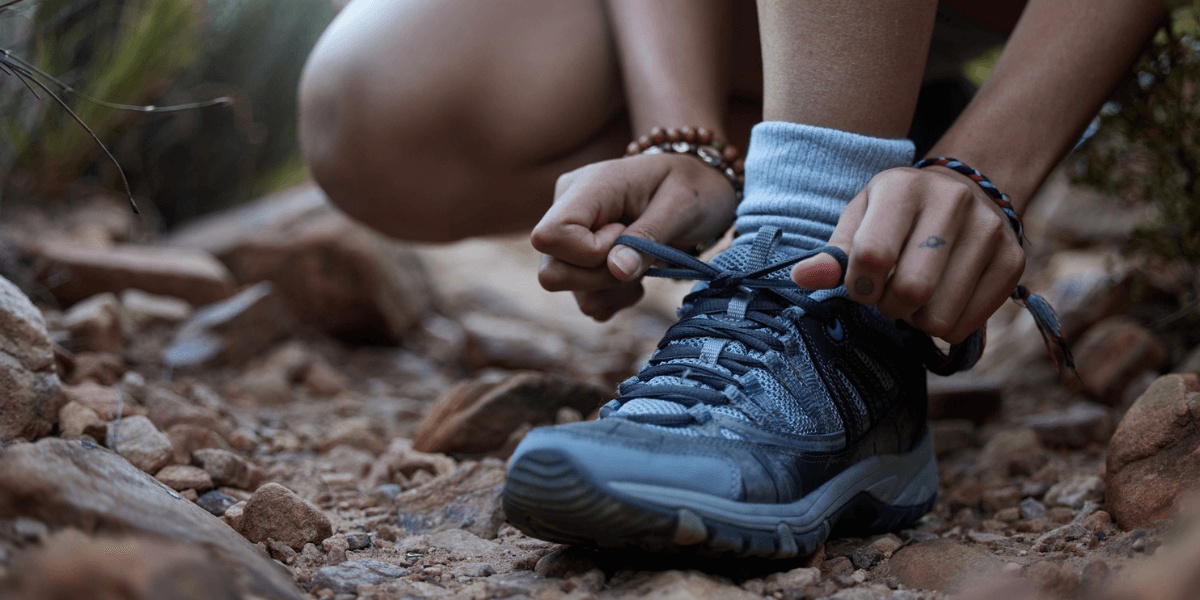Begin A Trekking Adventure With Your Sole-Mates And A Perfect Fit For Women
September 26 2023 – Nysh Website

Hiking shoes are a hit among trekking enthusiasts- even those who prefer hiking barefoot acknowledge the value of good quality trekking shoes. Well, Mother Nature always has surprises packed for the trekkers. So, you never know what weather you might encounter. Going on a walk with standard shoes is one of the most common novice errors most trekkers make.
Some people replace them with their running shoes occasionally, but they never take the time to purchase hiking boots. While moisture-wicking hiking socks and other hiking shoes can be pricey, they are an investment you will not regret in the longer run. They are not just strong but also paradigm-shifting. Suitable trekking shoes for women and men provide a better trekking experience- minus any adventure injuries!
But First- Feet Health: Why Invest In Best Trekking Shoes?
Imagine yourself setting out on a fantastic hiking expedition with stunning scenery and the prospect of making discoveries. Donning the correct equipment can make a significant difference in promising a memorable and pleasurable trip, whether a seasoned trekker or an amateur. The appropriate hiking shoes with a proper fit are one of the most vital tools in your trekking armory.
Numerous athletes, seasoned hikers, and runners acknowledge their favorite pastime can lead to bacterial and fungal infections in the toenails. Moisture becoming trapped in your feet leads to problems while walking. Additionally, wearing the incorrect socks and shoes for trekking can leave you with itchy, odorous, or even painful foot blisters. It leads to difficulties during walking and beyond if your feet are not in good shape.
Now picture the weather forecast indicating the day's weather will be sunny and clear. You opt to take it easy and put on your running shoes. Halfway through your walk, you discover the skies growing gloomy and cloudy, indicating rain is on the way. Trying to hike through a wet route while wearing running shoes is a formula for disaster, no matter which hiking track you opt for. However, it will not be a problem if you adorn a pair of efficient women trekking shoes.
● Choosing A Perfect Cinderella Fit
Finding the appropriate fit for your shoes is a comfort issue. A good journey on the slopes can become an unpleasant nightmare if the shoes are uncomfortable. Setting out on a daunting trail in shoes one size small or big can take away a lot from the overall experience. The agony can increase to the point of developing blisters as the miles pass. How can you truly indulge in your surroundings and appreciate the natural beauty of the trails? Therefore, wearing only a well-fitted pair is crucial before beginning any route.
● All About The Performance During The Journey
Imagine a long day of walking where each step was painful or uncomfortable. It lessens enjoyment and affects performance, especially if you are a trekking connoisseur. Steeping in suitable trekking footwear for women and men allows for a solid base for each stride, promising the feet are well-supported and safeguarded. With a proper fit, your feet experience less tension and strain, allowing you to stride the route with assurance. Isn’t it amazing how a minor change, like the right fit, can influence your “trek- record”?
● Avoid Unknown Mishaps Along The Trail
Many trekkers vouch for this critical issue from personal experience that correctly fitted hiking shoes prevent injuries. They often recall the time on a long trail with ill-fitting shoes. The result? Hot patches and painful blisters make even the smallest stride agonizing.
Undoubtedly, wearing uncomfortable shoes limits your comfort and increases the chances of suffering more injuries. Additionally, lack of stability and traction in a shoe increases the risk of rolling an ankle or other lower limb injuries on uneven ground. However, you will notice a dramatic decrease in the likelihood of such accidents after switching to high-quality and tested shoes. An ideal pair provides a snug fit and prevents blisters, bleached toenails, plantar fasciitis, sprained arches, and bone spurs.
● Wear Them Out On Test Treks
Understanding the value of breaking in shoes is vital before starting a lengthy walk after finding your ideal fit. To give the shoes time to adapt to my feet, you must wear them around the house or on short walks. The simple technique assists in avoiding discomfort and blisters when hiking. It lets your shoes somehow understand every curve of your feet.
Remember: It requires a personal journey to discover the right match. Spend some time experimenting and paying attention to your feet. Many trekkers do not realize the quality and performance of women's hiking boots overall if they break them just two days before the actual trekking expedition. Therefore, start by using it locally in your neighborhood and at home. You can also take short hikes to evaluate the comfort and functionality of the shoes.
● Adds To The Support And Rigidity
Your feet need as much support as possible from your hiking shoes- and the hiking boots can be your savior for those highly anticipated treks. The best fits are your best bet if carrying a backpack or light luggage since they feature more ankle support than other shoes and firmer midsoles. Ankle-high boots are necessary to prevent sprains that might occur while trekking. Regular trainers are preferable to somewhat lighter hiking shoes if you intend to go on day hikes on less rugged terrain.
● Don’t Rule Our Mud And Streams
Undertaking a trek means exposing your feet to many natural challenges, including water, dust, venomous creatures, and the local flora. The boots in numerous shapes and designs come in handy, sheltering your feet from these aspects and keeping them moisture-free. Waterproof trekking footwear dries quickly and offers additional benefits over regular hiking shoes. While your regular sports shoes and sneakers remain damp for a long time, wearing hiking boots will only promote a convenient stride!
Wonder. Wander. Repeat
Although most individuals choose trainers instead of hiking boots, it is not a wise choice with the uneven hiking terrain and trail obstacles. True trekkers adore their boots since they understand the long list of benefits. You can also invest in add-on trekking gear like foot and leg warmers to beat the cold at those high trek points. All you need is to get the best fit and the features and say goodbye to your trekking agonies. WARMEE by Nysh is your go-to partner for long journeys like trekking, mountaineering, and more. Stride through the long trails on Nysh to gather your trekking equipment, such as convenient heat packs and more. Visit now!
FAQs
1. What factors should we consider before buying a pair of trekking shoes for women?
Ans: While style and versatility are significant aspects, you must consider the practicality of hiking boots. Ensure to check the foot size, padding, comfort level, and shoe build before purchasing.
2. Is there a difference between trekking and hiking shoes?
Ans: Yes. Hiking shoes are similar to casual sports shoes, while hiking shoes are better and have more ankle support. Shoes designed specifically for trekking are better for multi-day treks.
3. Are women’s hiking shoes waterproof?
Ans: Yes. Most hiking shoes for men and women are water-resistant, complying with unforeseen weather conditions on different terrains.
4. How long do trekking boots last?
Ans: While it depends on the terrain you prefer to trek on and shoe care, most trekking boots last 600 to 1000 miles.
5. Are hiking shoes functional for daily use?
Ans: Yes! You can use them every day for long or short walks. It all depends on how comfortable you feel in this sturdy footwear.


0 comments